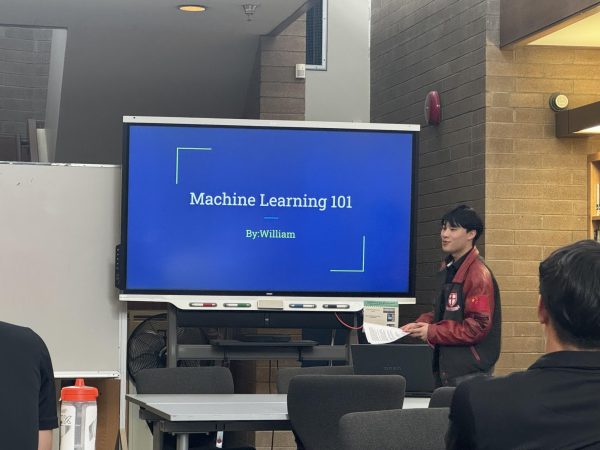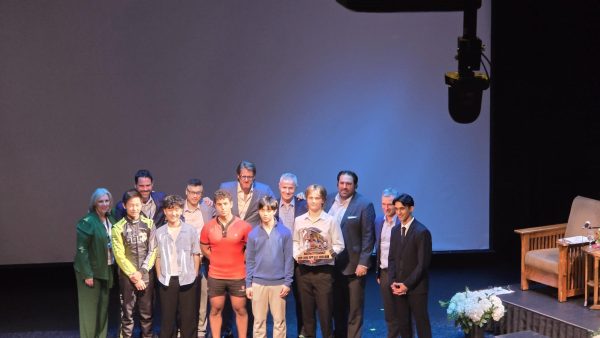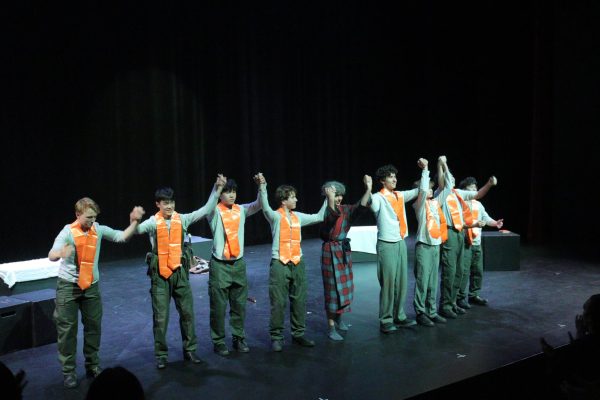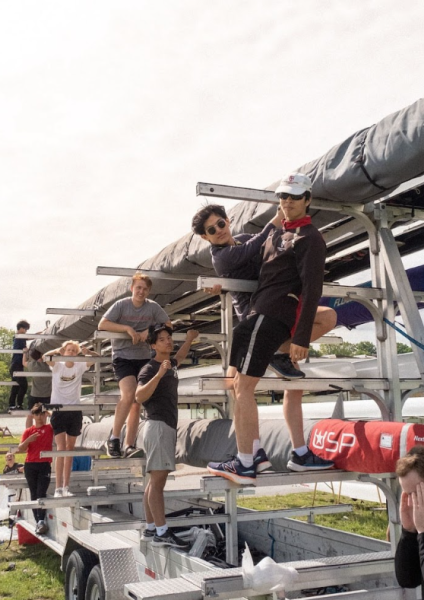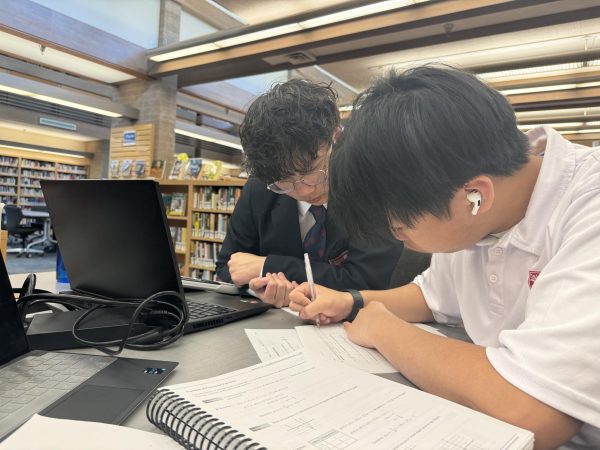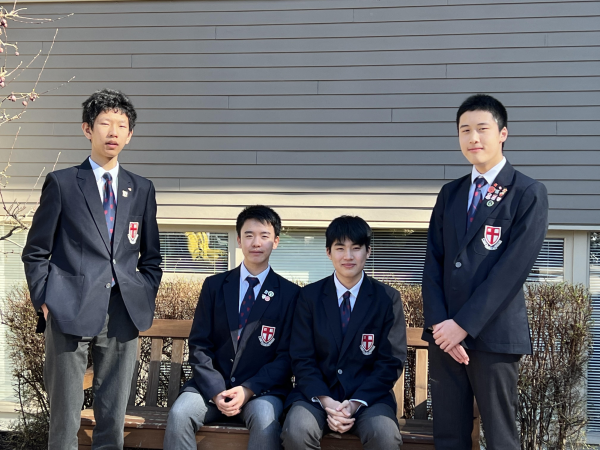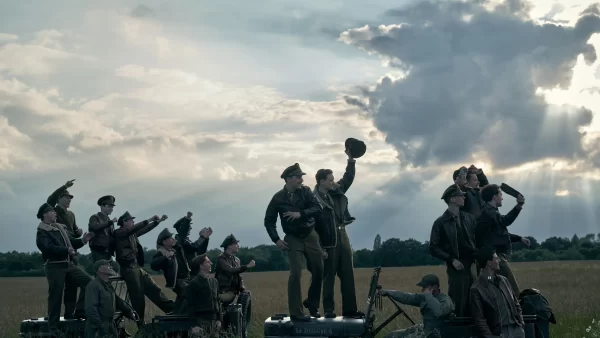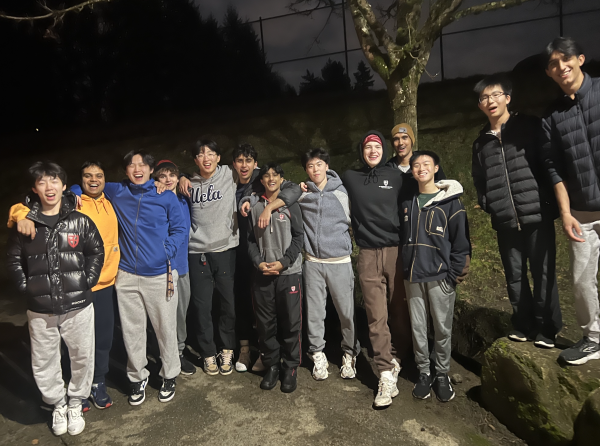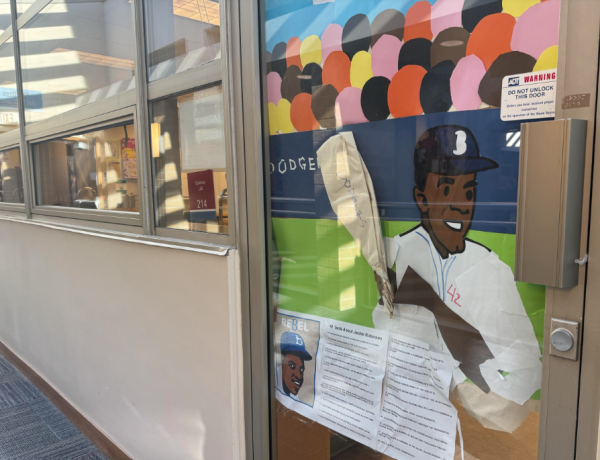21st Century; a new age of learning
“As a teacher, you sit in class and you get that question: ‘Why am I learning this?’ And you need to be able to defend that.” – Mr. Johnston, Director of Learning
The 2015-16 school year has sparked a plethora of changes in St. George’s continual strive for excellence in modern education. Staff and students are growing witness to the school’s transformational period under the leadership of new senior school principal Mr. Gary Kern, as St. George’s adapts to a more developmental big-picture learning style. Education as a whole is shifting towards establishing conceptual understandings rather than rote memory processing and is focusing largely on intangibles such as critical thinking and communication skills; Saints is starting to make strides towards the perceived future of education.

David Yang (12) Hartley Witten (12) Cole Attisha (12) and Marek Ormerod (12) engaged in their learning!
The new BC curriculum, per the provincial government, proposes “learning through real-world situations” and highlights the “collaboration, critical thinking and communication skills” students will need to succeed postsecondary (source). The curriculum is aimed to accommodate personal learning styles and pinpoint student interests and passions. Three ‘Core Competencies’ are listed as the essential skills required for students to succeed after graduation: communication, personal and social competency, and thinking skills.
One can witness the fragility of the education system’s image as its changes provoke controversy. Concern has arisen pertaining to the focus and measurability of the new curriculum, particularly as to how thinking and social skills can be accurately assessed in the classroom. Additionally, many teachers and parents are concerned to see content-based learning being reevaluated as the somewhat abstract concepts of critical thinking and real-world applicability are taking over.

Andrew Day (11) creating a masterpiece in the art room!
St. George’s in particular has seen a multitude of changes in recent years. Saints’ students are experiencing an increased focus on learning through class-based discussions and reflective writing. Grades are witnessing cohort integration in attempt to maintain consistency between classes and enable collaborative learning between students and teachers.
Provoking significant controversy, however, has been the exponential increase in assemblies and special events at Saints. The school has invested considerable resources into bringing in guest speakers and organizing special assemblies consistently throughout the year, exposing students and teachers to a wide array of unique presentations. With Saints’ current schedule, however, the student body only meets for assembly once a week on Friday mornings. As a result, Saints has been forced to adjust daily schedules to uniquely accommodate various events and presentations.

Ms. Konopaki working together with her social studies 9 class!
The 2016-17 school year will mark the implementation of St. George’s new senior school schedule. Blocks will rotate monthly; Saints’ has found that boys learn and perform best in the later hours of the morning, therefore the new rotation schedule will better suit said statistics so all classes will occur during those hours every four months. Additionally, a new ‘X’ block has been integrated into the timetable to put aside time for special events/assemblies/etc. The ‘X’ block will take place before lunch on Wednesdays.
Teachers bear varying opinions pertaining to St. George’s pending changes. Ms. Tanya Black, science and learning support teacher, is incredibly optimistic towards the new curriculum, describing the new grade 9 curriculum as “awesome, as they’ve removed a lot of the specific content (formerly called prescribed learning outcomes) to allow more horizontal exploration of topics rather that vertical ‘surface’ learning.” She then spoke to the focus of learning as shifting towards “learning skillsets rather than regurgitating knowledge. In the science lab, we’re learning to synthesize, analyze, innovate and critically think about scientific processes.”

Working on his art piece, displaying artistic talent at it’s finest!
Ms. Black also spoke to the new schedule: “I think it’s going to be great as there will be more time for breaks and transitions between classes… class time will be more concentrated as learning time. The changes will also allow more learning to happen in the ‘peak’ learning time.” In addition, she referred to the ‘X’ block as “interesting” because “we have no idea how it’s going to be utilized.”
Students also hold a myriad of opinions and responses to the changes within the school. Jake Hauser (12) referred to the influx of 21st century learning as a “magical solution sent down from high above, with questionable practical applicability”. Jake went further to explain that he felt “many parts of 21st century learning were introduced poorly” but acknowledges that “large adjustments take time.” He recalled his experiences in social studies as a younger student, stating that he is “realizing now that [he] remembers it more vividly than [his] more recent years. The style made the information stick much better for me than pure collaboration or discussion or projects.”

Grade 8 students working hard in the learning commons!
Jake also spoke to the newfound inflow of assemblies and special events, detailing that “we seem to have them more often, and senior students especially – we miss a lot of class time for things.” He explained that he’s “always been one for missing class for real learning”, but thinks “the value of special events and assemblies depends mostly on how in touch the administration is with the student body, its interests, and its needs. Frankly, some presentations are a huge waste of time – not just for me, but for everyone I see falling asleep in their chairs. Other times, there’s controversy, which can be great. Sometimes, a speaker is brought in who connects with the entire school.” Jake spoke eloquently to his St. George’s experience both pertaining to his academic and extracurricular involvement, and his full statement can be found here.
As Saints anxiously awaits the launch of the coming changes, one can deduce that it is impossible to fully disregard or predict the outcome of change before it takes effect. To conclude, the Creed reached out to Ryan Karimi (11) for a statement. Ryan spoke to his involvement as a student at St. George’s:
“Obviously Saints has changed a lot in the last few years in terms of things like how the curriculum is taught. However, often times, institutional change can be difficult to discern from simply growing up.

Maric Son (11) rocking out in the orchestra!
For example, I distinctly remember the first full school assembly of my Grade 8 year; Kais Khimji delivered his opening address. I remember sitting on a bench in the second row (I wasn’t quite brave enough to sit right up at the front), and watching, starry-eyed, as each newly-elected prefect walked across the stage. I remember Stuart Warren talking to me after that assembly and encouraging me to join the Student Life committee; more than anything, I remember revering that group of 12-odd Grads.
Since then, almost four years have passed more quickly than I could have ever imagined. Last month, I realized could be taking Stuart’s place, and that fills me with both nostalgia and pride. In that sense, it’s really been this specific activity that has allowed me to see that, though Student Gov’t may have changed over the years, I’ve certainly changed and matured along with it.”
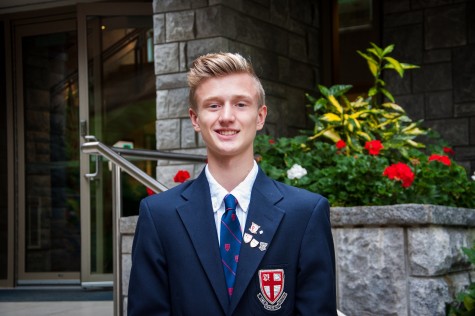
Jared Bakonyi is a grade 11 student at Saint Georges. Applying to the school for his 8th grade year, Jared was thrilled to join the Saints community in...



